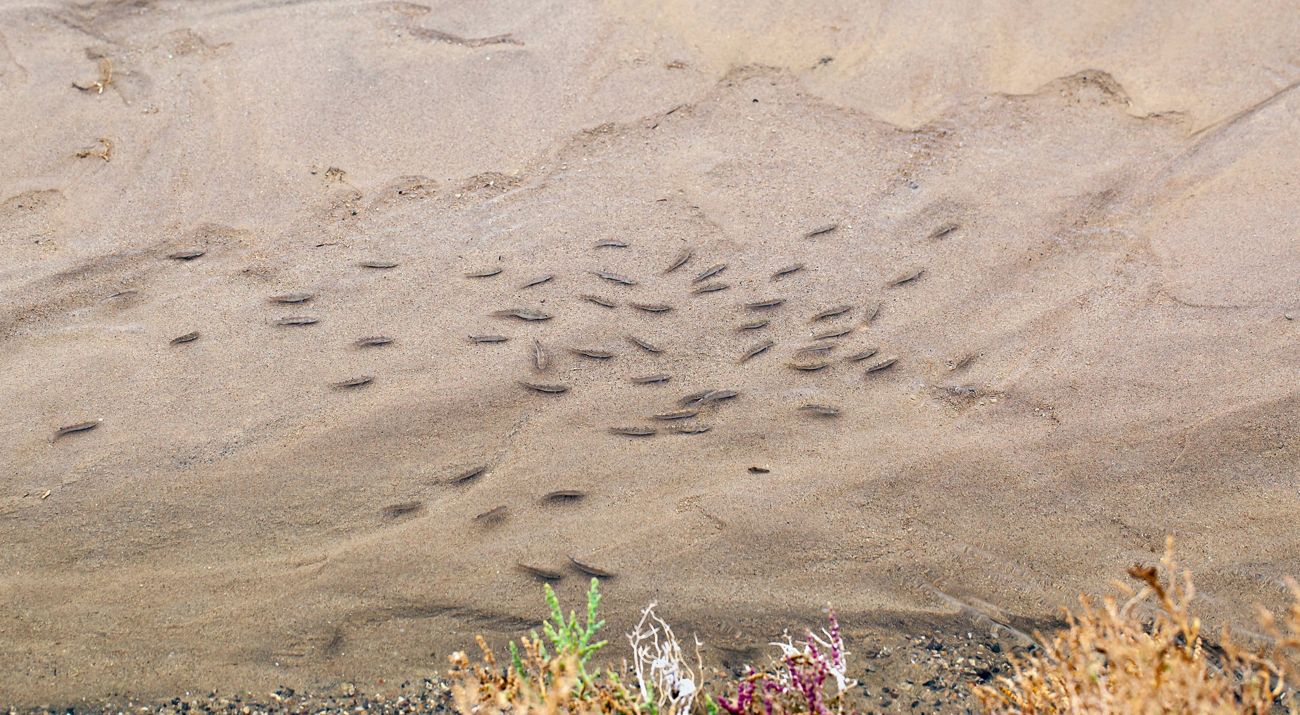Meet the Pupfish
Pupfish are killifish — small, colorful, knuckle-sized fish found on three continents. They are known for surviving harsh environments.
Once, in prehistoric times, pupfish in the Southwest probably consisted of only one species. As the climate became hotter, the lakes and rivers began drying up, leaving only isolated springs, pools and rivers. The pupfish became isolated in these little pockets of remaining water. Essentially desert springs became habitat islands. As happens on small islands, species rapidly evolved to adapt to specific conditions. About 30 pupfish species are now found throughout the Southwest.
Their habitats are salty streams and warm water temperatures – conditions that would turn a trout belly up in minutes. The Salt Creek pupfish, for instance, lives in water three times as salty as the ocean. They can be easily viewed along a boardwalk in Death Valley National Park.
In the summer, much of this fish’s habitat dries up as daytime temperatures soar to 120 degrees Fahrenheit. And still, it thrives, as it has for thousands of years, eating algae, plant matter and insects. The Ash Meadows Amargosa pupfish lives in waters up to 92 degrees and can survive in water only a half-inch deep!
Protecting the Pupfish
In a place like the Mojave, where life is already pushed to its limits, even small changes to natural systems can have major effects.
Now big changes are coming to the desert, and quickly. Nationwide, the government has prioritized the development of utility-scale renewable-energy facilities by offering billions of dollars in federal loan guarantees and incentives. On top of that, California is requiring that 33 percent of its energy production come from low-carbon, renewable sources by 2020. And nowhere is more attractive for solar power—in terms of sunshine, space and access to markets—than the Mojave, which spans 32 million acres in four states.
That development would have consequences. Many of the targeted lands included important habitat for threatened species, such as the desert tortoise, and had been largely undisturbed by humans. When utility-scale solar facilities are built, the land is scraped of vegetation and fenced. People often make the mistake of thinking that the desert is indestructible because it looks so harsh, but it’s actually quite delicate.
The Nature Conservancy set out to paint a landscape-level picture of the best—and worst—places for development. Although many parts of the Mojave are largely undisturbed by humans, some areas have already been fractured by off-road vehicle trails, agricultural use or urban development, and thus would suffer less dramatic impacts from further alteration.
Building on about 50 data sets, as well as aerial photos and interviews with scientists and other experts, a team of TNC researchers assessed the ecological value of every square mile of land and water across the entire Mojave Desert.
Rather than looking at individual project proposals, the researchers zoomed out to see where the desert was intact, degraded, or entirely converted to development or agricultural uses. In a follow-up study, they overlaid this assessment with information about development suitability, land gradients, and proximity to transmission lines or electricity markets.
TNC wants to see the transition to cleaner energy, so we’re looking for the most comprehensive solutions. We want renewable energy development where there would be fewer impacts to nature. TNC’s assessment shows that it is possible to meet California’s renewable-energy goals—seven times over—in appropriate places that would not compromise biodiversity and conservation values.
